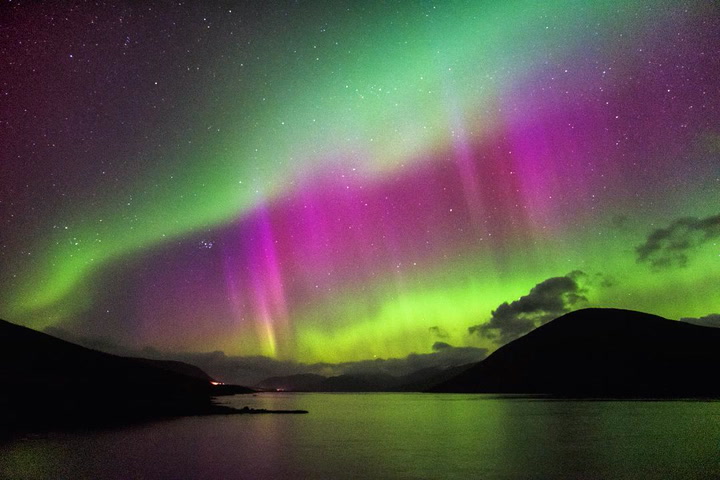Summary
Longer nights and increased geomagnetic activity means a higher chance of catching the aurora borealis.
There’s something strange happening about 60 miles above our planet. The northern lights — also called the aurora borealis — are back. A new solar cycle means that they will be more frequent, according to NASA’s Earth Observatory. So what’s going on?
When is northern lights season?
There is no official season since the northern lights are almost always present, day and night. Caused by charged particles from the sun hitting atoms in Earth’s atmosphere and releasing photons, it’s a process that happens constantly. However, they most often occur around 65º to 70º North latitudes — the Arctic Circle — which only gets significant darkness between September and March. Hence, that’s the observing season in places like Alaska, northern Canada, Iceland, Lapland (northern Norway, Sweden, and Finland), and northern Russia.
What makes the northern lights move south?
The more intense the solar wind coming our way (which is caused by explosions on the sun that release charged particles), the likelier it is to be visible at much lower latitudes.
When are the best times of the year to see the northern lights?
Talk to anyone in the “aurora zone” — on the Arctic Circle — and they’ll report seeing them even in August and May. However, the very best time for increased geomagnetic activity seems to be the equinoxes. That’s because Northern Lights displays are all about the direction of the solar wind and how it interacts with Earth. During the equinoxes, in March and September, the position of the Earth’s axis relative to the sun puts it side-on to the solar wind. That can mean more interaction with charged particles along the Earth’s magnetic lines, and hence more activity. But stronger displays are not a certainty.
In practical terms, a lack of moonlight (as well as clear skies) is just as important if you want to observe the northern lights. So be sure to sync your trip north with the phases of the Moon; aim for the week before the New Moon and the three days afterward.

What time of night do the northern lights appear?
Seeing the northern lights can take a lot of dedication since they can appear at any time of night. It’s likely that wherever you go to see the northern lights, a local guide or hotelier will tell you they always appear at a specific time. This is a habit of people who tend to go out at the same time of night and see them repeatedly. There is no science behind this. They really are as likely to appear at 5 a.m. as at 11 p.m. and they happen during the day, too. It’s just that we cannot see them because the sunlight completely overwhelms them. So keep your boots by your bed and wake yourself up every hour during the night to check for activity — that’s an inconvenient, but highly effective way of finding them if you’re staying somewhere under a dark sky where you can look out of the window. Travelers who get themselves to the Arctic Circle then insist on sleeping during the night are the people who miss out on seeing them and complain that there was no activity.
What is solar minimum?
The sun has a cycle of roughly 11 years, within which it reaches a point where it’s at its fiercest and most active (cue frequent geomagnetic storms). That’s called solar maximum, which last happened in 2014. The sun also reaches a point where it calms down and has the fewest explosions on its surface — so, sends the fewest charged particles towards Earth — which is known as solar minimum. Solar maximum is next due in 2025.
So should I wait until 2025 to see the northern lights?
No. Huge geomagnetic storms, the kind that can cause very intense displays of the northern lights, don’t happen every night, even during solar maximum. During solar minimum, they still happen, just less frequently. It’s all about luck, and whenever you go on a northern lights hunt, you’re very likely to see some kind of display of the northern lights if the sky is clear. Therefore, you can ignore worries about solar minimum; it only slightly reduces your chances of seeing something incredible. It’s cloud, not the sun’s activity, that’s your real enemy.





